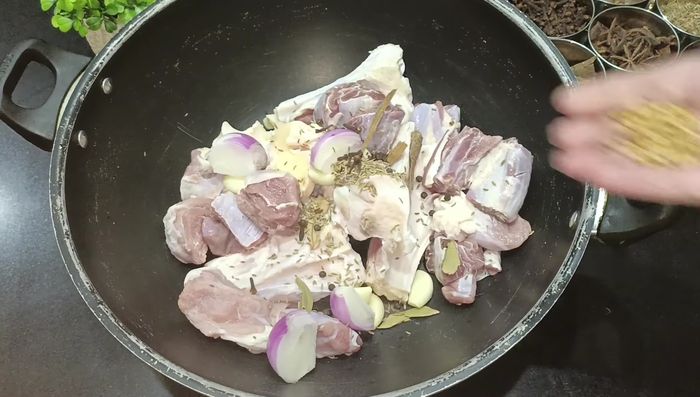Nihari, a rich and aromatic slow-cooked stew, holds a revered place in the culinary heritage of the Indian subcontinent, particularly in Lucknow, where it's elevated to an art form. Its origins trace back to the Mughal era, evolving over centuries into the intensely flavorful dish we know today. The name itself, believed to derive from the Persian word "nāhar," meaning "breakfast," reflects its traditional association with early morning meals. However, its deeply satisfying complexity makes it a culinary experience worthy of any time of day. The slow simmering process, often overnight, infuses the meat with profound depth of flavor, a testament to the culinary patience and expertise required.
This Lucknowi Nalli Nihari, featuring tender lamb shanks, is a true testament to this rich history. Its preparation involves a careful orchestration of spices, creating a symphony of aromas and tastes. Ready to embark on a culinary journey and create this Mughal masterpiece yourself? Let's delve into the detailed, step-by-step process below.
Tools Needed
- frying pan
- grinder
- pot
- clay bowl
Ingredients
Step-by-Step Instructions
Step 1. Preparing the Aromatic Base
- Dry roast coriander seeds, cumin seeds, cardamom, black pepper, cloves, cinnamon, mace, nutmeg, almond flowers, kabab sugar, fennel, and pippali until fragrant. Grind into a powder.
- In a pot, sauté chopped onions, garlic, dry coriander, white cumin seeds, black pepper, cloves, cinnamon, and big cardamom. Add water and simmer until the onions are soft.


Step 2. Slow Cooking the Beef
- Add the beef, tube bones, and half of the Nihari masala to the Yakhni. Simmer on medium heat until the beef is tender.

Step 3. Building the Rich Nihari Sauce
- In a separate pan, heat ghee. Add the remaining Nihari masala, ginger powder, garlic powder, Kashmiri red chili powder, red chili powder, white pepper, turmeric, and tartar. Fry until fragrant.
- Whisk yogurt and add to the fried masala, ensuring no lumps remain.
- Add the cooked beef to the masala, stir well. Separately, mix gum flour and gram flour with water to create a smooth batter. Remove ghee from the Nihari, then gradually add the flour batter, stirring constantly to thicken the sauce.



Step 4. Garnishing and Serving
- Garnish with chopped vegetables, chilies, coriander, mint, ginger, and lemon. Serve hot with roti, naan, etc.

Read more: Easy Beef Stew Recipe: Delicious & Simple Indian-Spiced Stew
Tips
- Use big pieces of beef for better texture.
- Remove the foam from the Yakhni while boiling to achieve a clear broth.
- Use a flat spoon to gently stir the Nihari when adding the flour mixture, preventing the meat from breaking.
- Remove the ghee from the top of the Nihari before adding the flour mixture to avoid lumps.
- Add the flour batter gradually to achieve the desired thickness.
- Use a clay pot for an enhanced flavour and aroma.
Nutrition
- N/A
FAQs
1. Can I use other cuts of lamb instead of Nalli (shanks)?
Yes, you can use bone-in lamb pieces like shoulder or leg, but the Nalli's bone marrow adds a unique richness. Cooking time may need adjustment.
2. How can I make the Nihari spicier or milder?
Adjust the amount of green chilies and red chili powder to your preference. For a milder version, reduce or omit the chilies altogether. For spicier, add more!
Your culinary journey to mastering Lucknowi Nalli Nihari has now come to a delicious end. Enjoy the rich, aromatic rewards of your patience and effort; this dish is a true testament to the enduring legacy of Mughal cuisine. Serve it hot with naan or roti for a truly authentic and unforgettable experience.
